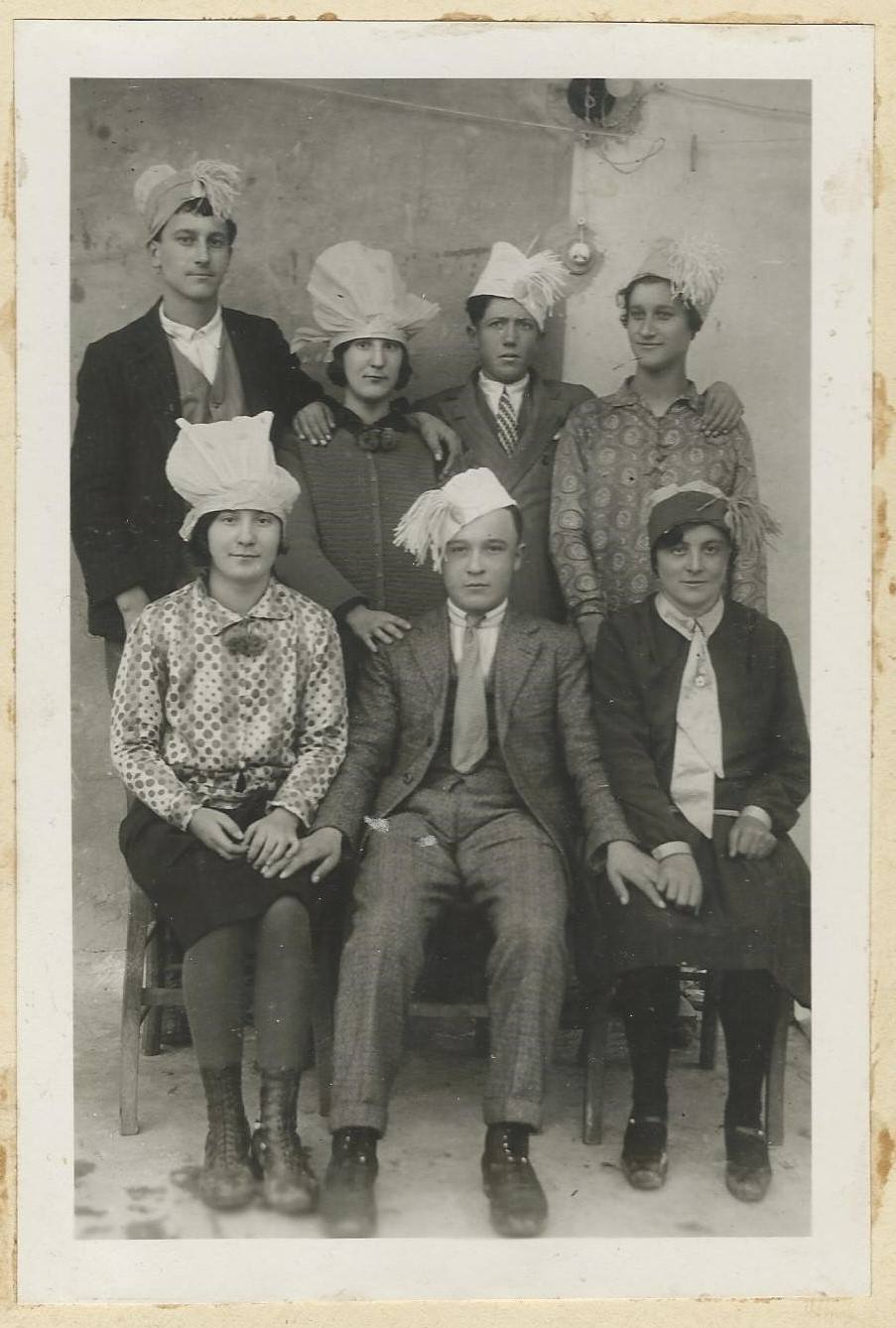by Saveria Masa
Carnival time has, from the distant past, been a typical moment of the year, during which lay culture takes over with festive events, in which ancient pagan symbols mix with agricultural traditions linked to the end of the winter.
In fact, Carnival time coincided with the beginning of the new agricultural year: this was the reason for the great rejoicing and propitious rites for abbundance, to which man has always resorted throughout time.
The word “Carnival” comes from the Latin
carnem levare, and referred to the banquet held on Shrove Tuesday, the day before Lent, during which they somehow had to say goodbye to meat.
One of the typical traditions of Shrove Tuesday even in the Valmalenco was dinner with
“oss de ciùn e patati” (pig's bones boiled with potatoes).
On those days, and only on those days, given the chronic state of poverty of our population, everything was more abundant: in January, they would kill the pig and, apart from the meat that was made into sausages for the following months,
they actually used the bones to make the dinner for Shrove Tuesday, the coagulated blood to make sausages, the lard to fry the unfailing pancakes and the
turtèi (stuffed pasta)!
Carnival celebrated the destruction of the old world and the birth of the new: during this period, everything was turned upside down, and proportions, rules, customs were voluntarily broken.
Not only was food abundant, even in the Valmalenco they used to dress up and reverse roles:
men as women and women as men, or dress up as real people (such as the priest), or fantasy characters.
People from all the villages in the valley used to disguise themselves with whatever was available.
Albina Scilironi (born in 1927) remembers that in Spriana:
“
We needed very little to dress up, we would take one of grandmother's aprons and then we went to our neighbour's homes and if we were lucky, they gave us two or three chestnuts each. L’è fö la végia (the old woman is outside) we would cry
”.
The passage from old to new was celebrated by "burning the old", which consisted of setting an effigy alight or simply burning a pile of brambles and wood.
People remember that in Cucchi, an old district of Spriana now uninhabited, the inhabitants gathered in the place called
Capitèl to watch the bonfire on Shrove Tuesday and the challenge between the boys of the various districts to see who could keep it burning the longest.
Before burning the carnival, the boys spent the evening burning bunches of straw tied to a stick
(paiarö), as they ran along the flat mule track.
The custom of burning the old was also popular in the district of Cao, on a small flat piece of grass with a panoramic view, not by chance called the Brüsegàda.
 Posing for a party among friends (Vassalini in the 40s)
Posing for a party among friends (Vassalini in the 40s)
In Chiesa, both young and old used to dress up.
Giuseppina Pedrolini (Pina), class of 1925, remembers that at Carnival time they used to dress up in old clothes and a paper mask.
They would knock on the doors of the houses, go inside and those who were able to would give them something, perhaps some dried chestnuts or dry biscuits.
Pina Dell’Andrino (class of 1933) also tells the story of how the children went round in a group in disguise.
They began when they were about five or six years old.
The older children carried their younger brothers and sisters and they wore the strangest clothes they could find: these were their grandparents' clothes, wide skirts and tight bodices.
The aim was not be recognised.
The adults also dressed up in costumes that often frightened the younger children.
Delfina Lenatti (class of 1924) tells how she never got dressed up because she was afraid of the grownups who disguised themselves:
“
when I was ten, I used to go to Costi to visit my grandmother. Where they later built the cablecar, there used to be a sort of marsh, and there I saw some young masked men, who were singing and jumping around.
One was wearing a goat skin and was pretending to be a goat. He was so scary!
Masked people also came down from Primolo, I remember some who had their heads and faces covered with a sort of basket with twigs and grass.
I was terrified!
”.
The meeting place for the older children, who had been given permission by their parents, was the Marianna inn in Curlo, where they gathered to dance to the sound of the upright piano.
Many others gathered in the cellars with the best supplies of pork meats and good wine, but these were mainly friends' haunts, mainly of young men, as that sort of thing wasn't suitable for young girls!
(Our thanks go to Isabella Dell'Agosto, Sara Scuffi and Elvira Ioli for their help in collecting the stories)